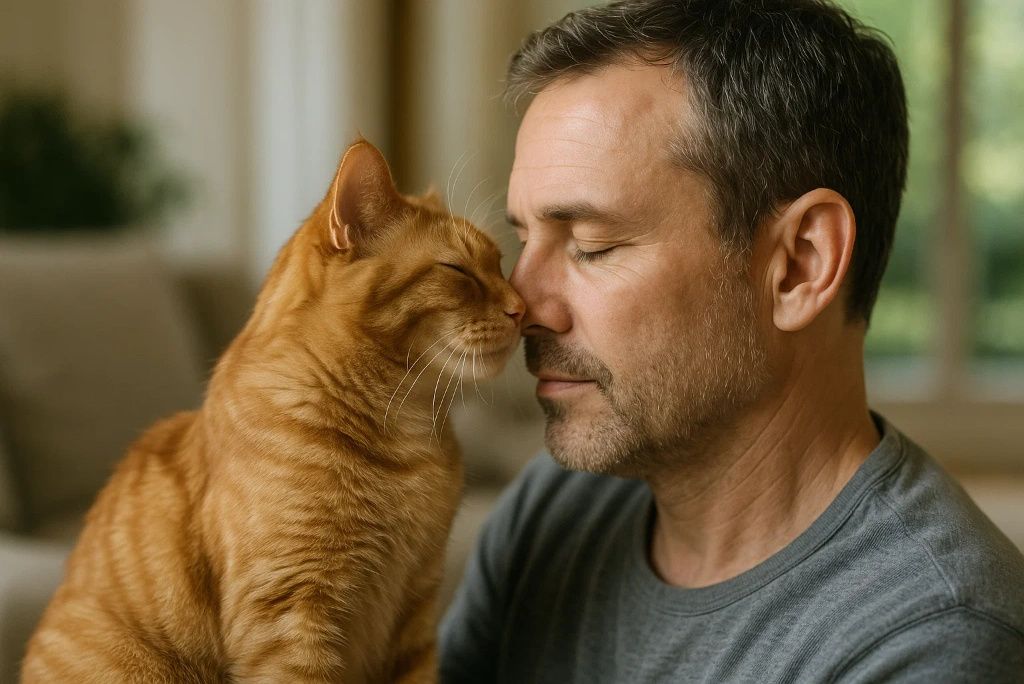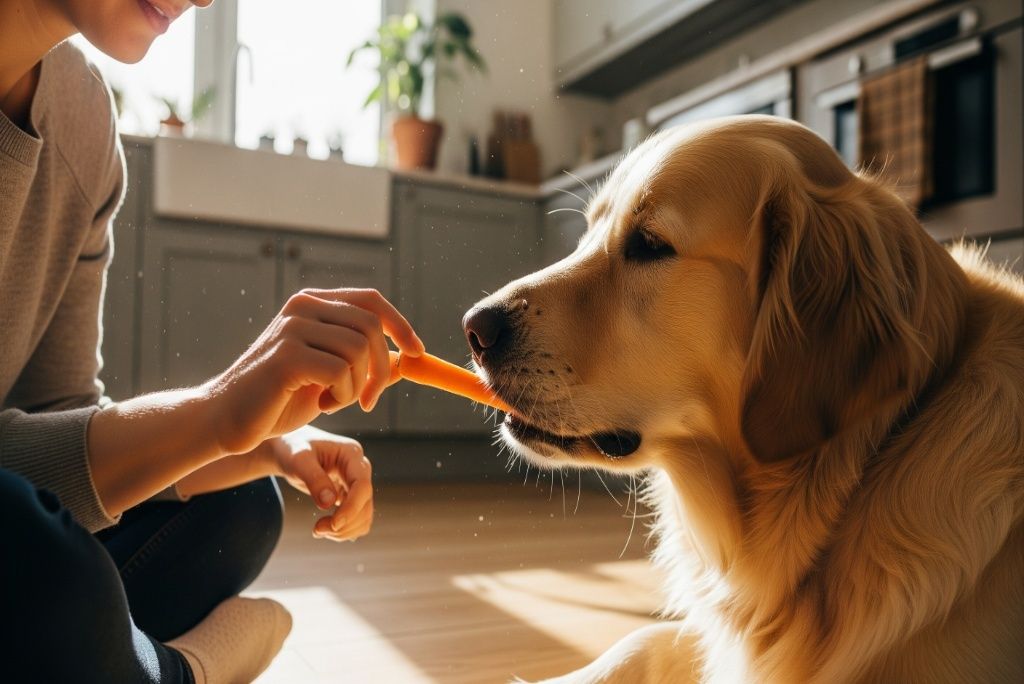The connection felt with a companion animal often transcends simple ownership, becoming one of the most profound relationships in a person’s life. This bond isn’t just a feeling; it is a complex interplay of biochemical, psychological, and evolutionary forces that mutually benefit both human and pet. Understanding the science behind this connection reveals why these relationships are so powerful, shaping our health, happiness, and even our social lives. It’s a symbiotic partnership rooted deep in our shared biology and history.
1. The Oxytocin Feedback Loop

When you stare into your dog’s eyes, both of your brains release oxytocin, often called the “love hormone.” This creates a positive feedback loop, similar to the one that bonds a mother and her infant. The more you interact, the more oxytocin is produced, strengthening feelings of attachment and well-being for both species. This biochemical reaction is a primary driver of the deep emotional connection many owners feel for their pets, making the bond a tangible, physiological event.
2. Measurable Stress Reduction

The simple act of petting an animal has a direct and measurable effect on stress levels. Physical contact with a pet can lower the production of cortisol, a primary stress hormone, while simultaneously increasing levels of the stress-reducing hormone serotonin. This is why animal-assisted therapy is so effective in clinical settings. The calming presence of an animal provides a non-judgmental, soothing interaction that helps regulate our physiological response to anxiety and pressure in our daily lives.
3. Enhanced Cardiovascular Health

Pet ownership, particularly dog ownership, is strongly linked to improved heart health. The benefits extend beyond the increased physical activity from walking a dog. Studies show that pet owners tend to have lower blood pressure, cholesterol, and triglyceride levels, which are all key factors in reducing the risk of heart attack and stroke. The calming effect and social support provided by a companion animal play a significant role in these positive cardiovascular outcomes, making them truly “heart-healthy” companions.
4. The Social Catalyst Effect

Pets are excellent social icebreakers. A dog, for instance, can act as a catalyst for social interaction, helping to alleviate loneliness and social isolation. Walking a dog often leads to conversations with neighbors and strangers, fostering a sense of community. This effect is crucial for mental well-being, as strong social networks are a key indicator of happiness and longevity. Pets provide a common ground for people to connect, bridging social gaps that might otherwise exist.
5. Anthropomorphism and Empathy

We often attribute human-like thoughts, emotions, and intentions to our pets—a tendency known as anthropomorphism. While we may not know exactly what they’re thinking, this habit helps us build empathy and strengthen our bond. By viewing our pets as complex emotional beings, we engage more deeply with them and are more attentive to their needs. This empathetic connection makes the relationship more reciprocal and emotionally satisfying, solidifying the pet’s role as a true family member.
6. The “Baby Schema” Response

Many pets possess features that trigger an innate caregiving response in humans, a concept known as the “baby schema.” Characteristics like large eyes, a rounded face, and a playful demeanor are also found in human infants. These “cute” features stimulate a nurturing instinct in our brains, making us want to protect and care for our animal companions. This evolutionary trigger ensures we find our pets endearing and helps form a strong, protective bond from the very beginning.
7. Co-Regulation of Emotions

Animals are highly attuned to human emotional states and can help us co-regulate our feelings. A calm dog or a purring cat can have a soothing effect on a person experiencing anxiety, helping to lower their heart rate and stabilize their mood. This process can also work in reverse, as an anxious owner may distress their pet. This shared emotional space, where each party influences the other’s psychological state, is a powerful component of the interspecies bond. (source)
8. Boosting the Immune System

Exposure to pets early in life may help strengthen the human immune system. Children who grow up in households with dogs or cats have been found to have a lower risk of developing certain allergies and asthma. The theory is that early exposure to the diverse microbes that pets carry helps a child’s immune system develop a more robust and balanced response. This early-life interaction can have lasting health benefits, programming the body for greater resilience. (source)
9. The Power of Play

Engaging in play with a pet is a powerful way to elevate mood and strengthen your connection. Play triggers the release of endorphins and dopamine in the human brain, which are neurotransmitters associated with pleasure and reward. It simultaneously reduces stress and fosters a sense of joy and spontaneity. For the pet, play is a vital form of enrichment and exercise. This shared, joyful activity reinforces the positive association you have with each other, making it a cornerstone of a healthy relationship. (source)
10. Attachment Theory Parallels

The bond between a pet and its owner often mirrors the attachment styles observed between human infants and their caregivers. Research has shown that dogs, for instance, display behaviors consistent with a “secure attachment” to their owners, using them as a secure base from which to explore the world. They show distress when the owner leaves and happiness upon their return. This parallel suggests the bond taps into the same fundamental attachment systems that govern our most important human relationships.
11. Feline Purrs and Their Healing Frequency

A cat’s purr is more than just a sign of contentment; it may also have therapeutic benefits. Purrs vibrate at a frequency between 25 and 150 Hertz, a range that has been shown in some studies to promote bone density and healing. While your cat is likely purring for its own comfort, the calming sound and gentle vibrations can provide a soothing, healing effect for the human holding it. This unique feline trait adds another fascinating layer to the human-cat bond. (source)
12. Gut Microbiome Synchronization

Emerging research indicates that humans and their pet dogs can share and influence each other’s gut microbiomes. Families that include a dog have a greater diversity of shared bacteria between cohabitating members than pet-free households. This microbial exchange may have implications for our immune system and overall health. Living in close contact means you are quite literally sharing a microbial world with your pet, which further intertwines your biological systems in a way scientists are just beginning to understand.
13. The Biophilia Hypothesis

The “biophilia hypothesis” suggests that humans have an innate tendency to connect with nature and other forms of life. Our bond with pets may be a modern manifestation of this deep-seated evolutionary drive. For much of human history, we lived in close proximity to animals. The desire to care for and interact with a companion animal fulfills this ancient need for connection to the natural world, providing a sense of purpose and belonging that is rooted in our own biology.
14. Non-Judgmental Social Support

Pets offer a form of unconditional positive regard that is rare in human relationships. They don’t judge you for your flaws, listen to your problems without offering unsolicited advice, and are consistently happy to see you. This unwavering acceptance and support can be incredibly beneficial for mental health, especially for individuals dealing with depression, PTSD, or anxiety. A pet’s simple, constant presence provides a feeling of being needed and loved, which is a powerful buffer against life’s challenges.
15. A Focus on the Present Moment

Interacting with a pet can be a powerful lesson in mindfulness. Animals live entirely in the present moment—they aren’t worrying about yesterday or planning for tomorrow. When you engage with them, whether by throwing a ball, stroking a cat, or simply watching them sleep, it pulls you into the now. This can be a form of meditation, helping to quiet a racing mind and ground you in the current moment, which is a key practice for reducing stress and improving overall well-being.

